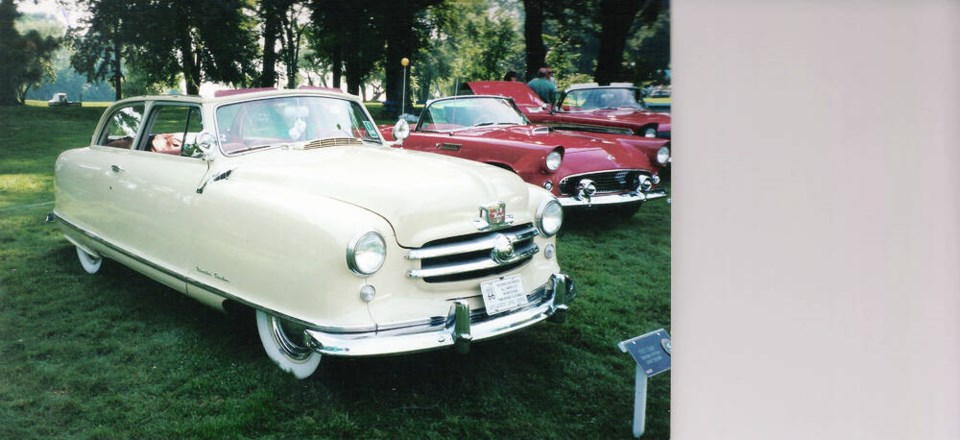The Rambler name was used back in 1902 on a bicycle produced by the Thomas. B. Jeffery Company of Kenosha, Wisconsin. When Jefferey began building cars they were also called Ramblers until 1917 when it was taken over by Charles Nash to become Nash Motor Co. The cars then became Nashes.
Charles Nash was born in 1864 and in spite of being abandoned by his parents as a child, became a skilled cushion stuffer at Durant-Dort Carriage Co. in Flint, Michigan. Millionaire William Durant of Durant-Dort formed General Motors in 1908 and by 1912 Nash had risen to president of GM. He finally became so frustrated with Durant’s slipshod management, he resigned in 1916, purchased the Jeffery company and changed it to Nash.
Nash Motor Co. prospered under Nash’s management, made it through the 1920s and in spite of some ups and downs, survived the Depression.
Nash amalgamated with appliance maker Kelvinator in 1937 mainly to obtain the services of Kelvinator president George Mason to replace the retiring Charles Nash. It also wanted its air-conditioning expertise. It became the Nash-Kelvinator Corp.
Mason was a forward thinking executive and scored an engineering breakthrough by bringing fully unitized body construction to American cars in the 1941 Nash Ambassador 600.
After producing Sikorsky helicopters during the Second World War, Nash returned to building its pre-war designed cars until its 1949 “Airflyte” model was ready.
Nash again moved boldly by introducing America’s first compact car in 1950, calling it the Rambler. GM and Ford had planned to build smaller cars after the war but abandoned the idea; it took smaller Nash to make the leap. Cincinnati-based Crosley was in production but Crosleys were too tiny to be practical.
Compared with standard sized cars, the Rambler was indeed compact. While Chevrolet had a wheelbase of 2,921 mm (115 in.) and weighed some 1,452 kg (3,200 lb), the little Nash’s wheelbase was only 2,540 mm (100 in.) and it weighed just 1,098 kg (2,420 lb).
Like its larger siblings, the Rambler had unit construction and a smaller version of the corporation’s “inverted bathtub” styling.
It was introduced first as a stylish convertible with the unusual feature of fixed side window frames. This allowed an electric motor to pull the top up along the rails like a window blind. Rambler soon expanded to a full line of body styles.
Power came from the 2.8 litre (172.6 cu in.), 82 horsepower, side-valve, six-cylinder engine from the larger Statesman that had replaced the 600. While not a tire burner, it provided reasonable performance and excellent fuel economy.
Tom McCahill, Mechanix Illustrated’s car tester estimated the Rambler might get 35 miles per U.S. gallon. Through a stroke of luck and a little old-fashioned horse trading McCahill scooped everyone and got the Rambler onto the cover of the May, 1950 MI. How he became the first journalist to drive the baby Nash is an interesting tale.
Arriving ahead of schedule at Nash’s Burlington, Wisconsin proving ground to test a Nash Ambassador in the fall of 1949, Tom inadvertently stumbled upon a fleet of Ramblers being tested by company engineers.
The cat was out of the bag, but a deal could be made. In exchange for promising to hold the story until the new car’s official spring introduction, “Uncle Tom McBlackmail” was allowed to drive it several months before its public debut.
Although unable to conduct a full road test, Tom reported the little Rambler’s top speed at 84 to 86 mph (135 to 138 km/h). In McCahillese he said it had “excellent riding qualities and quite a bit of snap and punch.”
The Rambler turned out to be the most successful of the early post-Second World War American compacts. These included the Kaiser-Frazer Henry J (and a rebadged Sears Allstate version from Sears, Roebuck and Co.), the Willys-Overland Aero Willys and Hudson Jet.
Some 26,000 Ramblers were produced during the first model year, less than half a calendar year. In 1951, it was 80,000, a remarkable achievement for a new model from a relatively small company.
For 1953 the Rambler received the Pinin Farina styling that all Nashes got, and began the inevitable American car growth cycle by stretching the sedan’s wheelbase to 2,743 mm (108 in.).
Nash and Hudson joined to form American Motors Corp. in 1954 and production of the original Rambler was discontinued in 1955, although larger cars bearing the Rambler name were still produced.
Sensing a return to smaller cars in the 1957-1958 recession, AMC resurrected the 2,540 mm (100 in.) wheelbase Rambler for 1958 and renamed it the American. It went on to evolve into the Hornet in 1970, later the Concord, and even later the four-wheel drive 1980s AMC Eagle, a pretty good run for America’s first post-war compact.


